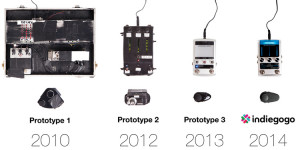So after realizing how much work had been put in to this blog, I decided I should contribute some too. Even though the course is more or less over for now, Serdar made me realize that this blog lives on.

Yesterday I had a Skype conference with Mr. Torstensen and we talked a little about their start-up venture Aalberg Audio. We spoke for about 40 minutes about different topics regarding entrepreneurship. I have decided to post the first 8 minutes as a video where there is a brief explaination on what they do and how they got started. For the rest of the 30 minutes I have decided to just sum it up in words, mainly to make this blogpost as informative and brief as possible, but also to save me some time, so please enjoy.
https://vimeo.com/109221692
After the story of how they got started we began to speak about his role as CEO and how he ended up in that position. Rune who is the inventor and had the initial idea was a friend of Aleksander and when they decided to start a venture, Rune knew that his interest lied in the product itself and not so much on the management of the venture. Therefore Aleksander who at the time was studying entrepreneurship at NTNU in Norway joined in as CEO. With an interest for project management and the product idea itself he started to lead on the venture which is now known as Aalberg Audio.

To date they have gone through several prototypes in their five years of existence. We spoke about how that process had been and how he looked back at it in hindsight. The Lean Start-up was something that came up during the conversation and eventhough they did not begin with TLS explicitly in mind, Rune already had that way of working in him, meaning that gathering feedback from the end user (guitarists, like himself) was something that came natural during the development process. They had an iterative design process where each step was one step closer to a finished prototype ready for mass production. In the early stages they would have an engineer to improve and optimize the stability of the very first setup, however, no focus on industrial design at this stage. When they had managed to get the functionality down and it worked more or less like they wanted, they hired an Industrial Designer to make it look good and refined. There were some challenges in regards to how they should design the product (which color to choose, should the controller be visible etc.) given the fact that design is very subjective and especially if you consider how many types of guitar players there are.
This was something I found very interesting given my background as an ID myself, but I can surely agree that they landed on a very nice and clean design that should be able to accomodate their potentialial customers.
We went on to talk about how they had managed to stay alive for 5 years and one of the answers was soft funding, meaning government grants to promote innovation and entrepreneurship. They had received over NOK500000 from various state-owned companies like Innovasjon Norge and others. From the begining and to this day the team had not received a single paycheck from the business yet, so bootstrapping was very familiar. However we did also talk about the transition to entrepreneurship and that they were accustomed to the student life, and its tight budget, when starting out as entrepreneurs. This is something to consider, it might be harder when you have to give away a fixed monthly salary.
Just recently, around 1 month ago, their Indiegogo campaign for crowdfunding ended, however they did not reach their funding goal and had to return what they had managed to gather. I asked how the process will be from here and thoughts about the campaign. The first thing he mentioned which was a very valid point is that it is important to consider, the target segment and their buying behaviour. As it turns out, guitarists are not the kind of people who buy gear without haven tried them out in person first. Most of the guitar players out there carry pride with their equipment and it is something personal that shapes their sound. Therefore, even if the product is very appealing, not enough people bought or funded them based on their webpage, videos and descriptions only. So their next step now will be to partner up with physical retailers and start selling their products in store, where customers get the chance to experience the product before buying, I think this is a great idea.
We spoke a little about their plans of expansion and it turns out that the ideal would be to be born global, meaning that they target several international countries to begin with. This is something we see a lot in software start-ups like for instance Skype and given todays technology it makes it easier and makes more sense. However, funding is a huge factor here, especially since they have a physical product, logistics might be harder to get in order. Therefore they would try to globalize as quick as possible and stepwise considering their financials. This is also known as The Uppsala Model, when you expand your company gradually.
Towards the end we wrapped up with speaking about the journey till now and what he had experienced so far. It turns out that entrepreneurship is all about doing and necessarily knowing all the theory, the theory is there to help, but not an answer for sucess. He pointed out the importance of seeking help from other people with previous experience and knowledge about the game and the fact that things are never the same. Situations and circumstances change all the time, therefore it is important to make decisions based on the situation. Then it suddenly made more sense to me that it is the people around you (contacts, advisory board, network etc.) that will help you the most, and not books.
That’s it for this post and I wish Aleksander and his team the best of luck. I admire their progress and I think the product is really cool.
If you want to get in touch with Aleksander or interested in the product, please check out their website: www.aalbergaudio.com
I hope you enjoyed the read and please feel free to comment!
Liked it? Why not to share then?









